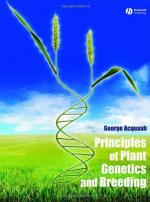|
This section contains 862 words (approx. 3 pages at 300 words per page) |

|
Plants have been central to genetics, dating back to their use by Gregor Mendel to establish the laws of inheritance of genetic traits. Since the discovery of deoxyribonucleic acid (DNA) and the abilities to transform species, including plants, with DNA derived elsewhere--recombinant DNA technology--the use of plants as vehicles to express traits encoded by recombinant DNA has exploded.
A plant breeder attempts to assemble a combination of genes in a crop plant which will make it as useful and productive as possible. Desirable traits include higher yield, improved quality, pest or disease resistance, or tolerance to environmental extremes. Obtaining the desired mix of traits can be lengthy and difficult. The ability to introduce foreign DNA into a plant via recombinant DNA technology has provided the means for identifying and isolating genes controlling specific characteristics in one kind of organism, and for moving those genes into another...
|
This section contains 862 words (approx. 3 pages at 300 words per page) |

|


